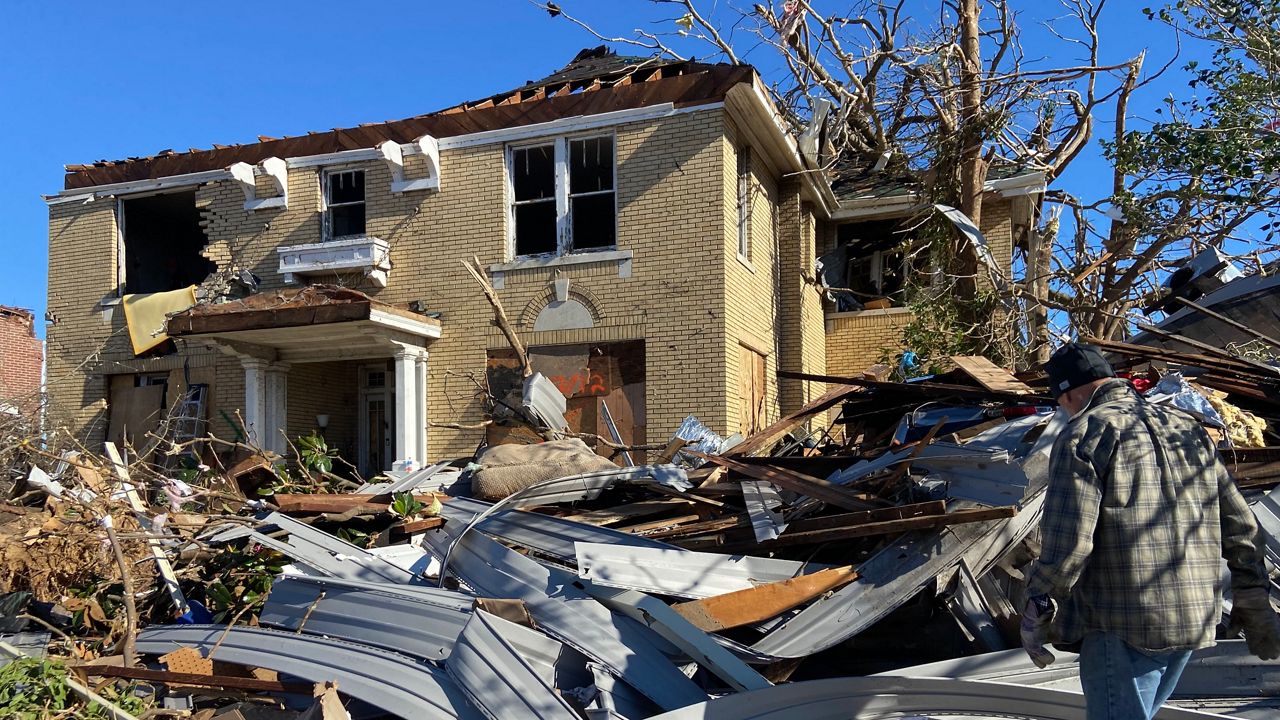LOUISVILLE, Ky. — When President Biden visited the tornado-ravaged areas of Western Kentucky this week, he pledged that the federal government will stick around as long as it takes for communities to rebuild. It remains to be seen, however, if the residents of those communities will stick around too.
Small towns often see population loss after a natural disaster. Two key reasons are the challenges involved with rebuilding housing and the difficulty of finding work, said Shannon Van Zandt, a professor of urban planning at Texas A&M University.
“Disasters like this can be a reason to leave and not come back, particularly because of the time that it takes to rebuild,” Van Zandt said. “A lot of people just don't have that kind of time.”
That may be particularly true in Mayfield, where one of the town’s largest employers, Mayfield Consumer Products, was turned into a massive pile of rubble last Friday. CEO Troy Propes has pledged to rebuild, saying this week that he’s “confident that over the long term will bring back 100% of our jobs.”
But former candle factory workers may be forced to go elsewhere to find jobs in the interim. And then they'll be less likely to return. “For lower income folks, it can be hard to lure them back after they’ve found new jobs and new housing in a new place,” Van Zandt said.
On Thursday, Gov. Andy Beshear alluded to the challenges that lie ahead for these communities. “We’re going to lose a lot of business in the area and there's going to be a rebuilding process,” he said. “The number one thing any company out there can do is commit to putting a new facility, a new office, in Mayfield, in Dawson, in Muhlenberg County. These are areas that we hope the jobs will come back.”
When Hurricane Harvey hit Rockport, Texas, in 2017, the town had a population of 11,145. A year later, it had dropped to 10,513, a decline of 5.7%. Gatlinburg, Tennessee, saw a similar dip after wildfires in 2016, with its population falling by 5.5%.
Some small towns have been completely wiped away by tornadoes. That was the case with tiny Manchester, South Dakota, which saw a half mile-wide EF4 tornado destroy every building in town on June 24, 2003. It was never rebuilt.
In other places, a natural disaster provides an opportunity. In 2007, Greensburg, Kansas was leveled by a EF5 tornado. In the days following the disaster, local leaders decided to rebuild with an eye toward sustainability.
By a decade later, the town was rebuilt with energy-efficient buildings that draw 100% of their energy from a wind farm. Though Greensburg has become a model for how a small town can rise up from the rubble of a tornado, it hasn’t kept people from leaving. By 2019, the population had dropped to roughly 850, down 600 from when the tornado hit.
Van Zandt said one of the best things small towns can do to prevent population loss is to work “with local banks and local charities to try to help people find temporary housing nearby so they can rebuild.”
Local leaders in Joplin, Missouri, which was ravaged by tornadoes in 2011, have said quickly bringing in temporary housing was a key part of avoiding population loss there. Though the city of 51,000 initially lost population after the disaster, it had rebounded by 2016.
Van Zandt said Joplin also benefited from a local emphasis on bringing everyone back, which stemmed from a strong sense of community. “If it was a tight-knit community before, then they can use what we would call social capital to try to give people a reason to return or to stay,” she said.



